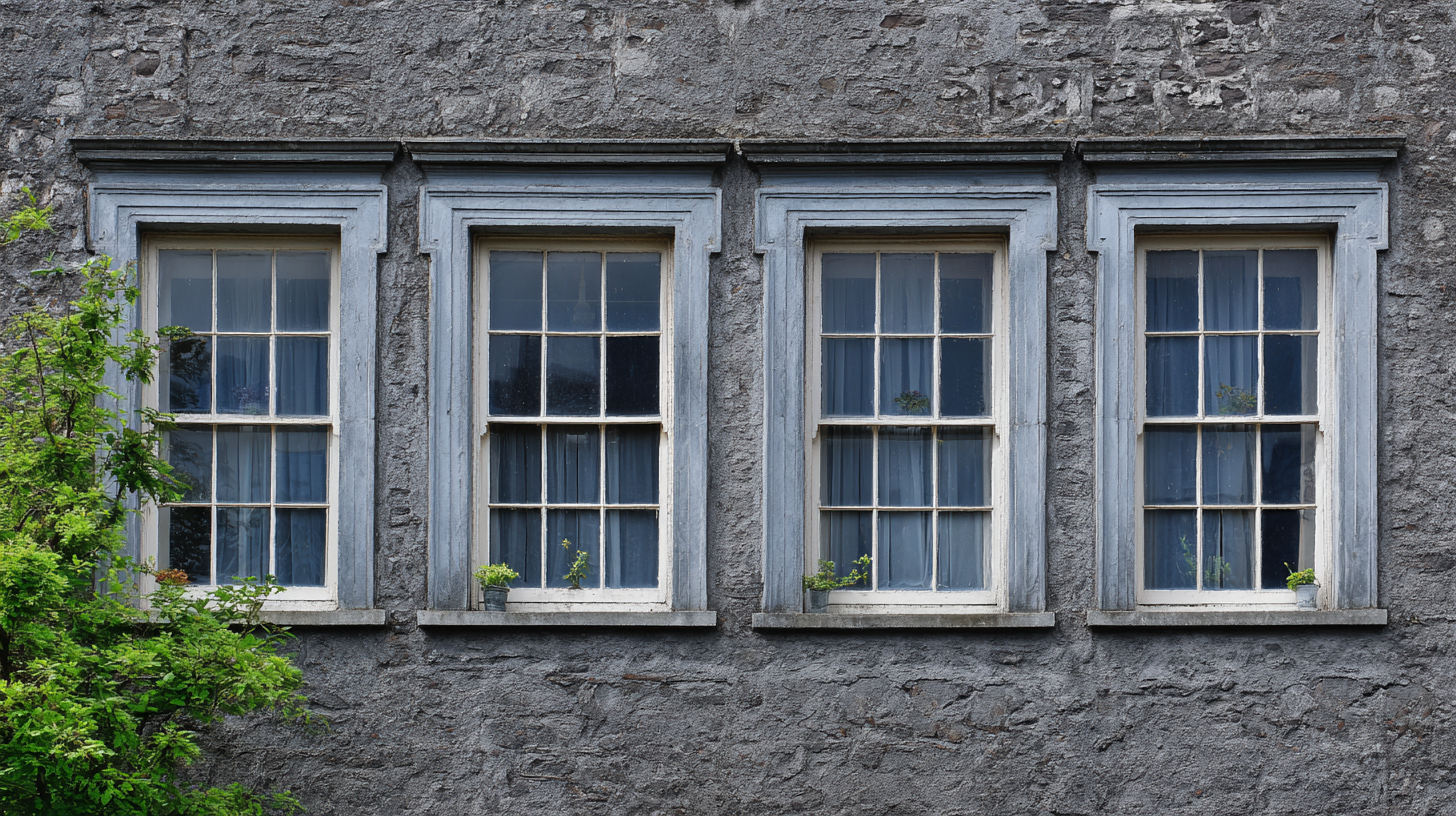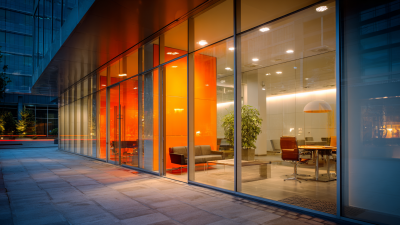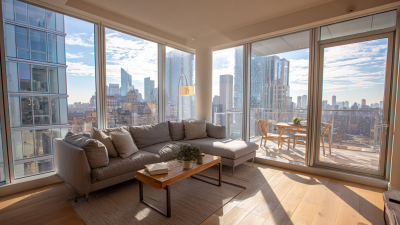Blog
Maximize Energy Efficiency with the Right House Windows for Your Home
In the pursuit of maximizing energy efficiency in homes, the choice of house windows plays a pivotal role. According to the U.S. Department of Energy, windows account for up to 30% of a home's heating and cooling energy use. As homeowners increasingly seek ways to lower utility bills and reduce their carbon footprint, investing in energy-efficient house windows emerges as a critical strategy. Industry expert Dr. Laura Green, a renowned energy efficiency consultant, emphasizes, “Choosing the right house windows can significantly enhance your home's thermal performance and comfort levels, while also providing substantial long-term savings.”

Recent studies highlight that modern, energy-efficient windows can reduce heating and cooling costs by approximately 25-50%. This considerable reduction not only benefits homeowners financially but also contributes to a decrease in overall energy consumption. Factors such as window frame material, glazing options, and installation quality are vital considerations that determine a window's efficiency rating.
As we delve into the "Top 10" house windows for enhancing energy efficiency, it is essential to recognize the profound impact that informed choices can have on sustainability and home comfort alike. By prioritizing energy performance in window selection, homeowners are not only making a wise investment but also taking a significant step towards a more sustainable future.
Understanding U-Value: The Key to Window Insulation Efficiency
When selecting windows for your home, understanding U-value is essential in maximizing energy efficiency. U-value measures the rate of heat transfer through a building element, indicating how well a window insulates. The lower the U-value, the better the window performs in preventing heat loss in winter and heat gain in summer. Therefore, choosing windows with a low U-value can significantly reduce energy bills and enhance indoor comfort.
In addition to U-value, other features such as glazing type, frame materials, and gas fills can affect overall efficiency. For instance, double or triple glazing with low-emissivity (Low-E) coatings can dramatically improve thermal performance. Selecting windows that fit well within your climate zone and complement your home’s architecture is crucial. By focusing on U-value and related features, homeowners can make informed decisions to invest in windows that not only conserve energy but also contribute to a sustainable living environment.

Solar Heat Gain Coefficient (SHGC): Balancing Natural Light and Energy Loss
The Solar Heat Gain Coefficient (SHGC) is a crucial metric in maximizing energy efficiency in homes, particularly when selecting the right windows. SHGC measures how much solar radiation can pass through windows, directly impacting indoor temperatures and energy consumption. A lower SHGC can help minimize excess heat gain during summer months, leading to reduced reliance on air conditioning and, consequently, lower energy bills. This balance between natural light and energy loss is vital for homeowners looking to optimize their living environments.
Recent advancements in glazing technologies highlight the potential of various window systems to enhance energy efficiency. Innovations such as vacuum-photovoltaic glazing not only provide superior thermal insulation but also harness solar energy, demonstrating how modern designs can contribute to reduced solar heat gain while generating clean electricity. Additionally, combining semi-transparent photovoltaic glazing showcases the dual benefits of harnessing natural light and minimizing thermal transfer, further emphasizing the importance of selecting windows that effectively manage SHGC in promoting energy-efficient buildings.
Maximize Energy Efficiency with the Right House Windows for Your Home - Solar Heat Gain Coefficient (SHGC)
| Window Type | SHGC Rating | Visible Transmittance | U-Factor | Recommended Use |
|---|---|---|---|---|
| Double Glazed Low-E | 0.25 | 0.63 | 0.30 | Cold Climates |
| Triple Glazed Low-E | 0.20 | 0.58 | 0.20 | Extreme Climates |
| Low-Emissivity Glass | 0.30 | 0.70 | 0.25 | Moderate Climates |
| Standard Double Glaze | 0.35 | 0.75 | 0.32 | All Climates |
| High-Performance Windows | 0.22 | 0.65 | 0.18 | Hot Climates |
Choosing Low-E Glass: Significantly Reduce Energy Costs by Up to 30%
When it comes to maximizing energy efficiency in your home, choosing the right windows is crucial. Among the various options available, low-emissivity (Low-E) glass stands out as an effective solution. This specialized glass provides a unique coating that reflects heat back into your home during winter while keeping it cool in the summer. By installing windows with Low-E glass, homeowners can significantly reduce energy costs—up to 30%—making a substantial difference in monthly bills.

Moreover, the initial investment in energy-efficient windows can lead to substantial long-term savings. Studies show that replacing old windows with energy-efficient options can save an average of 12% on energy bills. This improvement not only enhances the overall comfort of your home but also reduces the environmental impact by conserving energy. Therefore, making a well-informed decision to upgrade to Low-E glass can transform your living space into an energy-efficient haven.
Proper Window Installation: Enhancing Air Tightness for Optimal Performance
Proper window installation is crucial in maximizing energy efficiency in homes. According to the U.S. Department of Energy, up to 30% of a household’s heating and cooling energy can be lost through inefficient windows. By ensuring that windows are installed correctly, homeowners can significantly enhance air tightness, which minimizes drafts and reduces energy consumption. A report from the National Fenestration Rating Council highlights that well-installed windows with high thermal performance ratings can lead to energy cost savings of up to 15%, making it a financially sound home improvement strategy.
Moreover, comprehensive air sealing around window frames is essential for optimal performance. Energy Star reports that improper installation may lead to air leaks, which not only increase energy bills but also compromise indoor air quality. Techniques such as the use of foam sealants and caulk during installation can mitigate these issues. By focusing on professional installation methods and using high-quality window materials, homeowners can achieve a more comfortable living environment while reducing their carbon footprint. Investing in proper window installation is a step towards building an energy-efficient home.
Maximize Energy Efficiency with the Right House Windows
This chart illustrates the energy efficiency ratings of different types of house windows based on their installation quality and air tightness. Proper installation enhances the performance of windows, leading to greater energy savings.
Energy Star Ratings: Selecting Windows That Meet Industry Standards for Efficiency
When selecting windows for your home, understanding Energy Star ratings is crucial for maximizing energy efficiency. Energy Star is a program backed by the U.S. Environmental Protection Agency that indicates whether a product meets stringent energy performance standards. Windows that carry the Energy Star label are certified to help reduce home energy costs, enhance comfort, and minimize environmental impacts. Thus, homeowners should prioritize these ratings to ensure that they invest in quality products that promote energy savings.
The selection process involves examining the window's U-factor, solar heat gain coefficient, and visible transmittance. The U-factor measures the window's insulation capabilities, while the solar heat gain coefficient helps determine how much heat from the sun is transmitted through the window. High-performance windows with low U-factors and appropriate solar heat gain coefficients can significantly reduce heating and cooling needs. By focusing on Energy Star-rated windows, homeowners can make informed decisions that contribute to long-term energy efficiency and cost savings.
Related Posts
-

Navigating Global Trade Certifications for the Best Windows and Siding Solutions
-

Seven Best Strategies for Choosing Windows and Siding That Boost Energy Efficiency by 30 Percent
-

The Ultimate Guide to Navigating Commercial Window Replacement Options
-

How to Choose the Right Commercial Windows for Your Business Needs
-

The Advantages of Casement Windows for Homeowners in Modern Architecture
-

Revolutionizing Spaces: Real-Life Applications of the Best Windows and Siding in Sustainable Construction
About Us
We serve the Greater Milwaukee area: Waukesha, Milwaukee, Washington, Ozaukee Counties and nearby areas, including Germantown, Menomonee Falls, Mequon, Cedarburg, Thiensville, Grafton, Jackson, West Bend, Hartland, Waukesha, Brookfield, West Allis, Franklin, Greenfield and more. We are Wisconsin’s Best Contractor for Replacement Windows, Doors, Siding & Roofing!
Contact Details
Address:
N112 W14880 Mequon Road
Germantown, Wisconsin 53022
Phone:
Email:
Showroom Hours
Monday: 9am – 5pm
Tuesday: 9am – 5pm
Wednesday: 9am – 5pm
Thursday: 9am – 5pm
Friday: 9am – 4:30 pm
Saturday by Appointment
Evenings by Appointment



